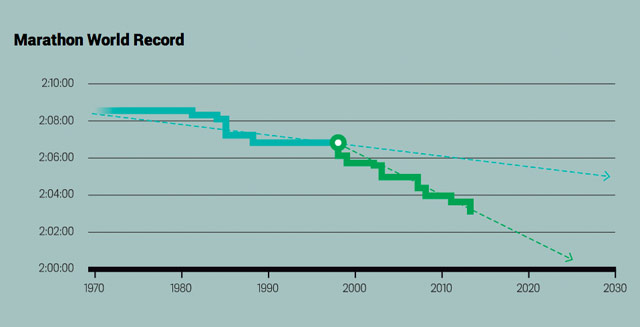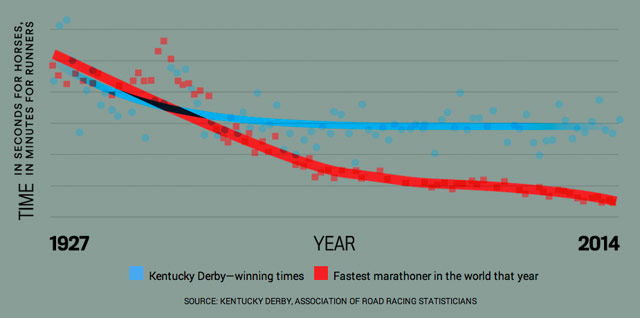What will it take to run a 2 hour marathon?

I am not a runner so I didn’t think I would find this exploration into the conditions under which a 2-hour marathon could occur that interesting. I was incorrect.
Between 1990 (the first year in which data was available) and 2011, the average male marathoner ranked in the top 100 that year shrank by 1.3 inches and 7.5 pounds. Smaller runners have less weight to haul around, yes. But they’re also better at heat dissipation; thanks to greater skin surface area relative to their weight, they can sustain higher speeds (and thus, greater internal heat production) without overheating and having to slow down. Despite our sub-two runner’s short frame, he’ll also have disproportionately long legs that help him cover ground and unusually slender calves that require less energy to swing than heavier limbs.
Runners shed heat through their skin, so bigger runners should have an advantage, right? Indeed, a 6’ 3” marathoner can dissipate 32 percent more heat than a 5’ 3” athlete with the same BMI. But heat generation rises faster in bigger runners because mass increases quicker than skin area. So at the same effort, the 6’ 3” guy ends up producing 42 percent more heat than his shorter peer-and overheating sooner.
The piece includes a favorite old chestnut of mine, man vs. horse:

Horses are still much quicker at distance, but humans are still improving.
Update: At the 2014 Berlin Marathon, Dennis Kimetto set a new world record, lowering the mark under 2:03 for the first time. (via @brzeski)





Stay Connected